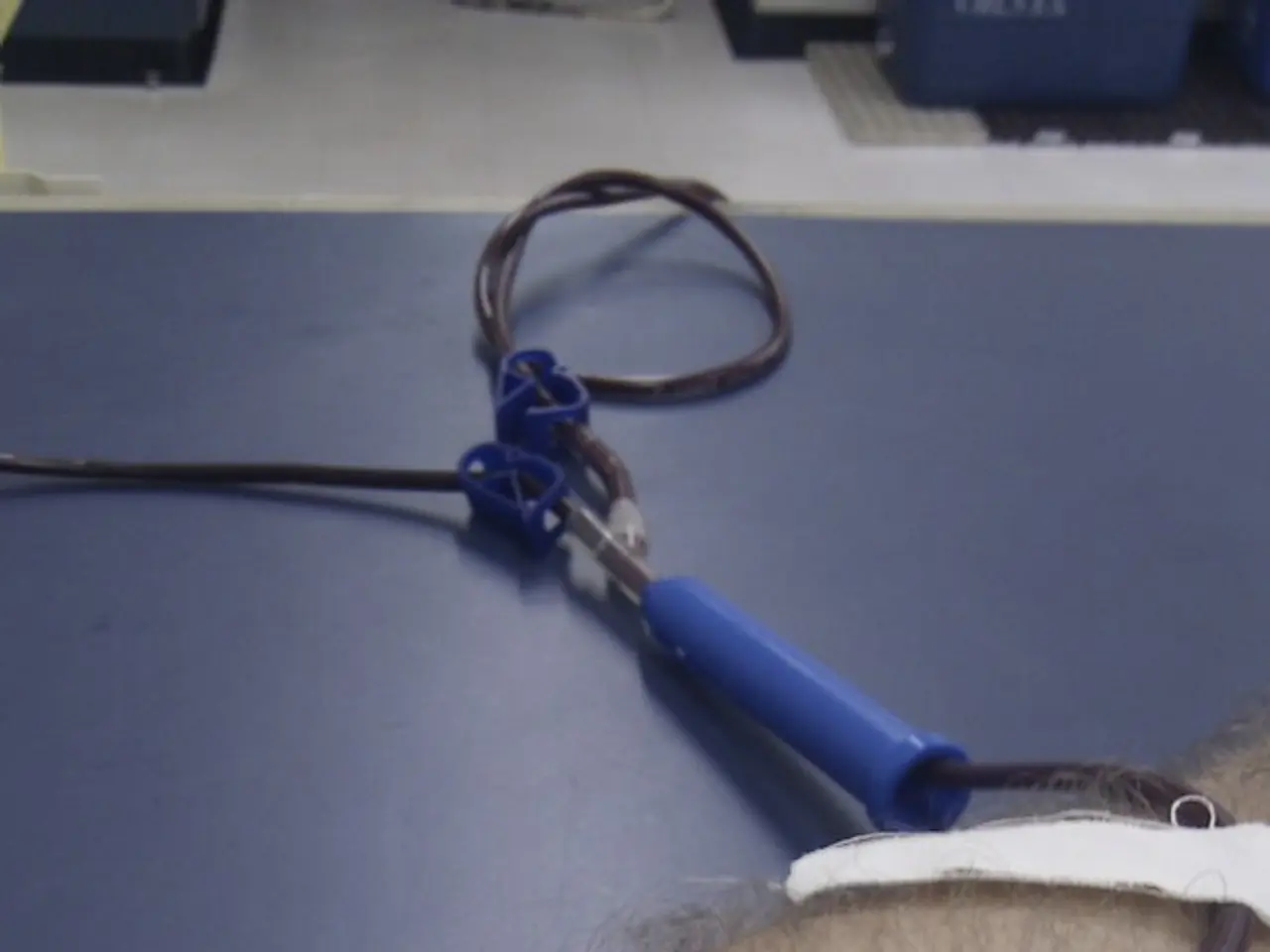HIV in Children: Manifestations, Remedies, and Additional Information
HIV, a virus that weakens the immune system, poses a significant threat to children, particularly those who are infected at birth or during early childhood. According to recent statistics, approximately 1.7 million children under the age of 15 are living with HIV globally, with the United States accounting for 1,544 diagnosed cases in children under 13 in 2018 [1][5].
Transmission
Unlike adults, who mostly contract HIV through sexual contact, needle sharing, or blood transfusions, children primarily acquire HIV through perinatal transmission, which includes transmission from the mother during pregnancy, labor, delivery, or breastfeeding [1][5]. Postnatal breastfeeding can be a route of HIV transmission if the mother’s virus is untreated [5].
Diagnosis
Diagnosing HIV in children can be challenging due to the passive transfer of maternal antibodies, which can make standard antibody tests unreliable. Therefore, virologic tests (HIV RNA or DNA PCR tests) are used for early diagnosis in infants [1]. In adults, antibody and antigen/antibody combination tests are standard, and it may take 1 to 6 months post-exposure to get a reliable antibody-based diagnosis [4].
Treatment
Children, especially infants, have higher HIV RNA levels and different immune responses compared to adults. For instance, young children can develop opportunistic infections at higher CD4 counts than adults [1]. Consequently, the treatment regimens are adjusted for age and weight, and drug formulations differ. Children require pediatric-appropriate antiretroviral therapies (ART) [1]. Early and consistent ART is critical to prevent disease progression [2].
Interestingly, children on ART show different proviral genetic patterns and potentially different selection pressures on the virus, suggesting that HIV reservoirs and remission strategies may differ between children and adults [3].
Outlook
Without treatment, vertically infected children can progress rapidly to AIDS and have high morbidity due to their immature immune system [1]. However, with early initiation of ART, children can maintain healthy immune function and have life expectancies approaching those of uninfected children and adults on treatment [2]. Monitoring involves CD4 counts and viral load like adults, but interpretation differs slightly because normal CD4 counts decline with age in children [1][4].
In conclusion, children primarily acquire HIV perinatally, require specialized diagnostic and treatment approaches tailored to developmental and immunologic differences, and with early ART, their prognosis can be very good, though their disease progression and viral characteristics differ biologically from adults. Adults typically acquire HIV through behavioral exposures, can be diagnosed with antibody tests, and have different viral reservoirs and disease progression patterns [1][2][3][4][5].
- The global impact of HIV is concerning, with 1.7 million children under 15 living with the virus.
- In the United States, there were 1,544 diagnosed cases in children under 13 in 2018.
- Transmission of HIV to children primarily occurs during perinatal periods: pregnancy, labor, delivery, or breastfeeding.
- Postnatal breastfeeding can transmit the virus if the mother’s condition is untreated.
- Diagnosing HIV in children can be challenging due to the influence of maternal antibodies on standard antibody tests.
- Virologic tests (HIV RNA or DNA PCR tests) are crucial for early diagnosis in infants.
- In adults, antibody and antigen/antibody combination tests are standard, making a diagnosis within 1 to 6 months post-exposure possible.
- Children, particularly infants, have unique immune responses and higher HIV levels compared to adults.
- Antiretroviral therapies (ART) treatment regimens are adjusted for age and weight in children, with pediatric-appropriate drug formulations.
- Early and consistent ART is essential for children to prevent disease progression and improve life expectancies.
- Children on ART may possess different proviral genetic patterns and viral selection pressures than adults.
- Without treatment, vertically infected children can progress rapidly to AIDS and exhibit high morbidity due to their underdeveloped immune system.
- Early ART initiation enables children to maintain healthy immune functioning and life expectancies similar to uninfected children and adults on treatment.
- Monitoring for children includes CD4 counts and viral load checks, although interpretation may vary due to age-related changes in normal CD4 counts.
- Compared to adults, children’s HIV disease progression and viral characteristics exhibit differences biologically.
- Adolescents, like adults, primarily contract HIV through behavioral exposures such as sexual contact, needle sharing, or blood transfusions.
- The medical-conditions HIV poses, including chronic diseases, cancer, respiratory conditions, and digestive health issues, can negatively impact workplace-wellness and productivity.
- Eye-health, hearing, and skin-care are also essential aspects of health and wellness for people living with HIV.
- Fitness and exercise, along with nutrition, play crucial roles in managing weight, cardiovascular health, and overall well-being for HIV patients.
- Sexual-health concerns are essential for open discussions in parenting and education-and-self-development.
- Autoimmune-disorders, mental-health issues, neurological-disorders, and environmental-science research can contribute to understanding and addressing HIV’s impact on various aspects of health.
- Climate-change initiatives can improve healthcare accessibility and outcomes for those living with HIV in developing nations.
- Lifestyle choices, such as investing in health and wealth-management, can support overall wellness and financial stability for HIV patients.
- Gadgets, data-and-cloud-computing, and artificial-intelligence technologies can enhance healthcare delivery and disease monitoring.
- Relationships, pets, and travel can significantly impact HIV treatment compliance and emotional well-being.
- Cars and fashion-and-beauty trends should consider factors like skin-conditions and allergies for people with HIV.
- Food-and-drink choices can contribute to HIV treatment efficacy, particularly with respect to nutrition and weight management.
- Career-development, learning, shopping, and personal-growth opportunities are essential for individuals living with HIV to thrive in all aspects of life.




